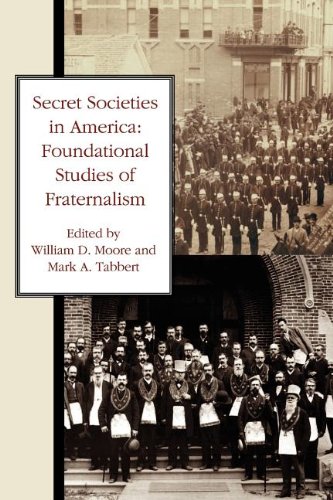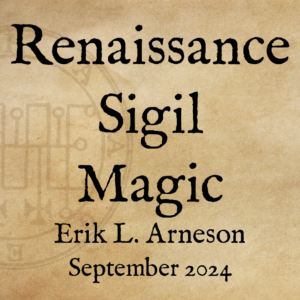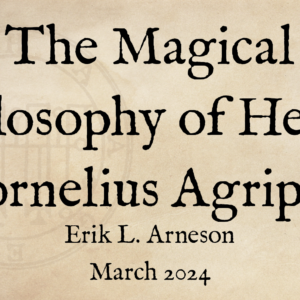 Secret Societies in America: Foundational Studies of Fraternalism
Secret Societies in America: Foundational Studies of Fraternalism
Edited by William D. Moore and Mark A. Tabbert
Cornerstone Book Publishers, 2011
294 pages
Paperback $24.95, ISBN 978-1-61342-024-9
The magnitude with which fraternal organizations influenced American society and history is something that we hear a lot about through conspiracies, but not enough about from main-stream historians. It turns out that these organizations – including the Freemasons, Oddfellows, and other familiar names – are an integral part of the story of the United States of America. This book, Secret Societies in America: Foundational Studies of Fraternalism, is a collection of remarkable essays and studies that showcases this influence. Published from the 1890s through the middle of the 20th century, they illustrate not only that enormous influence but the changes that occurred within American fraternalism which may have contributed to its waning popularity.
Reading the articles in this book, I was surprised that I’d never been exposed to any of this material before. These articles are the original source of many claims about numbers, statistics, and basic information claimed by many modern secret societies. They paint a fascinating picture of fraternities and their place in American society in the 19th and 20th centuries. The articles range in style from sensational journalism to dry sociology and cover a variety of topics.
Changing Attitudes in Fraternalism
Many articles approach fraternal history from unexpected angles, presenting influences in our society that are almost entirely unrepresented today. For instance, there is a great deal of material about how the life insurance industry worked and developed in the 19th century, and how it tied into the fraternal boom.
Milton Lehman reported in 1949 that one well-known saying of Freemasonry was, “It’s an inborn instinct to belong to a secret society.” This is an attitude which has disappeared in the modern world. It’s fascinating to get a glimpse of how fraternal organizations were considered such an integral part of the American way of life.
Is Freemasonry a Secret Society?
The phrase “secret society” carries sinister undertones today, but was once the go-to phrase to describe a fraternal order. The oldest articles in this collection, written before 1910, use it to describe all sorts of fraternal orders. Learning about the evolution of the term makes the worn-out trope of the Freemasons sound obnoxious: “Freemasonry is not a secret society. It is a society with secrets.” In fact, Freemasonry is indeed a secret society, it’s just that “secret society” hasn’t always meant the same thing.
Anti-fraternal author J.M. Foster in 1898 wrote “[…] it is safe to say that in all there are fully 6,000,000 persons in this country held in the coils of Secretism.” He also states that membership in fraternal orders was growing at an astounding rate of 300,000 per year. Many of the earlier articles use the term “joiner” to indicate people who became members of secret societies. It wasn’t a derogatory term. In fact, at one point, 40% of the adult population of the United States belonged to at least one secret society. The numbers are sometimes surprising: In 1911, the Oddfellows were the largest fraternity in terms of membership.
Conclusion: This is a Good Book
I really enjoyed this book. The one article I had difficulty with was “The Sociology of Secrecy and of Secret Societies” by Georg Simmel, a German sociologist. It was too dense and verbose, the language too clumsy. I’m not sure if this is the fault of Simmel or because of the translation.
In conclusion, if you are interested in the history of Freemasonry and its place in society, you will find this book invaluable. If you are a conspiracy theorist, you will find the information in this book valuable, as well. Hopefully it can help enrich your understanding of history and the role fraternal societies have played throughout the unfolding tale of the United States.
An earlier version of this review was published in Vol. 66, №2 (Spring 2013) of Philalethes: The Journal of Masonic Research & Letters.
Support me on Patreon: https://www.patreon.com/arnemancy






Leave a Reply